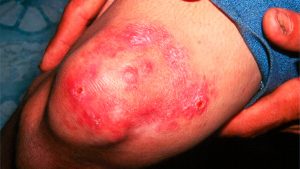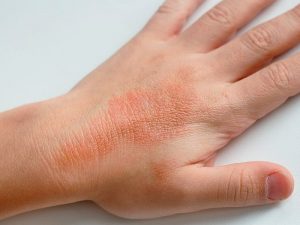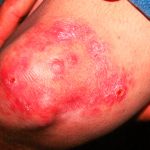All about Allergies
What is an Allergic Reaction?
The job of our immune systems is to fight illnesses that arrive in the form of foreign organisms. In the case of an allergy, the body confuses a harmless substance, or allergens, as one of these harmful outside organisms. The immune system’s response to allergens is the production of antibodies called immunoglobulin E. This response is known commonly as an allergic reaction. Symptoms of an allergic reaction vary from one person to another.
Allergy Symptoms
- Runny nose.
- Sneezing.
- Wheezing, shortness of breath.
- Coughing.
- Fatigue.
- Headache.
- Nausea and vomiting.
- Fever.
- Rash.
- Hives.
- Trouble breathing.
- Swelling in the mouth
Quick Facts
- Allergies are the sixth-leading cause of chronic illness in the S.
- More than 50 million Americans suffer from allergies yearly.
- According to the Asthma and Allergy Foundation of America (AAFA), 30 per cent of adults and 40 per cent of children are affected by at least one allergy.
Types of Allergies
Allergic reactions can range from causing mild discomfort to being life threatening, so it is important to identify the cause with help from your healthcare professional. The Asthma and Allergy Foundation of America (AAFA) lists the following as the most common allergens:
Grass and Pollen Allergies
According to the AAFA, pollen is one of the most common causes of seasonal allergies. Hay fever, or seasonal allergic rhinitis, can be caused by pollens from grasses, trees and weeds. Allergic rhinitis affects 20 million adults and 6.1 million children in the U.S. Sufferers are at highest risk of a reaction during summer, spring and fall when plants release the most pollen. The most common symptoms are a runny nose, sneezing, itchy nose, itchy eyes, nasal congestion, red and watery eyes, and swollen eyes. The AAFA recommends limiting outdoor activity during high-pollen seasons, keeping windows closed, taking allergy medicine even before pollen season, bathing and shampooing hair daily to remove pollen, and washing bedding in hot, soapy water once a week.
Skin Allergies
There are different types of skin allergies, which mostly affect children up to four years old. Hives, eczema, and skin inflammation are the most common allergic skin conditions. People with skin allergies have very sensitive immune systems and can have an allergic reaction from skin contact with certain substances, including latex, pet dander, insects (mosquitoes, cockroaches, fire ants, bees, wasps) and poison ivy. The signs of skin allergies include rashes, itching, bumps, swelling, flaky skin, cracked skin and redness.
Food Allergies
The Centers for Disease Control and Prevention (CDC) estimates 4 to 6 per cent of American children and 4 per cent of American adults suffer from food allergies. According to the AAFA, peanuts are the most common food allergy, followed by milk and shellfish. Other common food allergies in the United States include eggs, soy, wheat, fish and tree nut.
There are two types of food allergies with differing symptoms:
- Immunoglobulin E Mediated: This reaction causes the body to produce immunoglobulin E antibodies. The antibodies react with particular foods, resulting in skin rashes, swollen lips, tongue or throat, trouble breathing, stomach pain, vomiting or diarrhea. In the most serious cases this reaction can lead to anaphylaxis, a sometimes fatal allergic reaction. Anaphylaxis reactions must be treated immediately with epinephrine.
- Non-IgE Mediated: This reaction occurs in other parts of the immune system, but does not cause the release of immunoglobulin E. The symptoms of non-IgE mediated allergies mostly occur in the digestive tract and include vomiting and diarrhea. Non-IgE symptoms are not always immediate and can take up to three days to appear.
Drug Allergies
According to the AAFA, penicillin is the most common drug allergy trigger. Up to 10 per cent of people have reported an allergy to penicillin. Many people confuse true drug allergies with what is actually an “adverse reaction to drugs”. These adverse reactions can be due to overdosing, side effects, indirect effects, drug interactions, or the worsening of a condition. A true drug allergy must cause the body to produce immunoglobulin E antibodies. Drug allergy reactions can occur throughout the body with symptoms such as hives, wheezing, shortness of breath, throat and mouth swelling, nausea, vomiting, diarrhea, drop in blood pressure, abdominal pain and fainting. Drug allergies can cause anaphylaxis, which can be fatal.
Allergy Treatments
If you think you are allergic to something, consult a doctor or allergy specialist. For skin allergies, it is recommended to visit a dermatologist. A specialist will examine your personal and medical history, perform a physical exam, and possibly take a skin, patch or blood test. Common treatments prescribed by doctors, as listed by the AAFA, are:
- Nasal Corticosteroids: Reduce swelling in the nasal passage.
- Antihistamines: Block histamines that are the cause of swelling and reduce symptoms of seasonal allergies.
- Mast Cell Stabilizers: Come in the form of eye drops or nasal sprays. Prevent the body from releasing histamines.
- Decongestants: Reduce swelling in the nose membrane.
- Corticosteroid Creams: Reduce skin allergy symptoms such as itchiness and rashes.
- Oral Corticosteroids: Prescribed to reduce swelling and stop allergic reactions. These can cause serious side effects and should be taken only when prescribed by your doctor.
- Immunotherapy: This treatment comes in the form of an injection or by administering a small dose of an allergen under the tongue. According to the American College of Allergy, Asthma & Immunology, this treatment helps reduce rhinitis symptoms in about 85 per cent of sufferers.
- Epinephrine: Used to halt severe allergic reactions that cause anaphylaxis.
Prevent Allergic Reactions
- Take steps to avoid allergy triggers.
- Take prescribed medicine as instructed by your healthcare
- If you suffer from anaphylaxis-causing allergies, consult your doctor about preventive measures and treatment options, and wear a medical bracelet.
- Track your allergy symptoms/triggers in a journal for your doctor.











